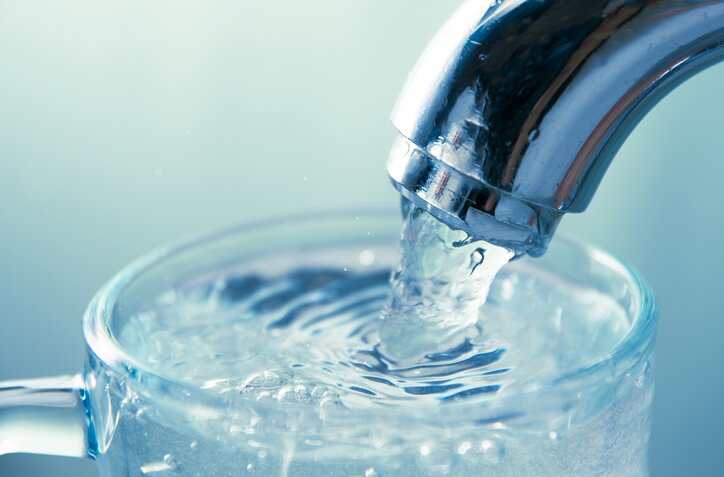Every day we drink water, but how is the quality of drinking water determined? Water quality testing devices (WQTDs) include, for example, portable kits, digital pH meters, conductivity meters, turbidity meters, dissolved oxygen analyzers, and multiparameter meters. WQTDs identify and address potential contaminants, and as such, they are paramount for assuring water safety for public use. NSF P524-2023: Water Quality Testing Devices for Drinking Water establishes performance validation criteria for WQTDs, also referred to as water sensor equipment, used to measure water quality parameters in water.
Public Water Systems
If you pay a water bill, you are purchasing water from a public water system (PWS): any collection, treatment, storage, and distribution facilities under the control of the operator of such system. A PWS provides water for human consumption through pipes or other constructed conveyances to at least 15 service connections or serves an average of at least 25 people for at least 60 days a year. There are over 148,000 public water systems in the United States.
PWS use water quality testing devices (WQTDs) and are required to monitor, test, and report results to federal or state drinking water agencies to assure compliance with National Primary Drinking Water Standards. Complying to NSF P524-2023 helps to assure that WQTDs meet water quality parameters.
What Is NSF P524?
Water quality testing devices (WQTDs) are used to monitor and measure drinking water quality. NSF P524-2023 covers any device, sensor, or test kit used to measure water quality parameters in drinking water where the operation of the kit does not require access to laboratory facilities or equipment and provides results in real time or after a short wait period. The scope of this testing protocol includes both “bench top” style devices in which discrete aliquots of water are analyzed, and “in-line” devices that give readings on continuously sampled/measured water.
The objective of this protocol is to set forth basic requirements for standardizing verification of manufacturer performance claims and label/packaging claims and evaluating material composition and construction. NSF P524-2023 is intended for voluntary use by certifying organizations, regulatory agencies, users, and equipment manufacturers as a basis for providing assurances that adequate public health protection exists for products covered by the scope of this document.
This protocol does not address the use of WQTD with untreated water, waste or graywater, recreational / pool water, or industrial waters.
Water Quality Testing Devices (WQTDs) Certification
Water quality testing devices (WQTDs) are required to meet specific testing and certification requirements depending on their application/end use, device type, and region where they are being sold. NSF developed NSF P524-2023 for all manufacturers wishing to obtain this voluntary certification with NSF. Manufacturers and resellers/retailers may use NSF P524-2023 only for their internal purposes in connection with the certification process of and by NSF International.
NSF P524-2023 may not be used by others to certify or evaluate compliance with this protocol, and this protocol and its content may not be reproduced, disseminated, published, stored in a retrieval system, or transmitted in any form or by any means (electronic, mechanical, photocopying, recording, scanning, or otherwise), except with the express, written permission of NSF.
What Contaminants Do WQTD Test For?
Specific contaminants and measures that water quality testing devices (WQTD) test for include the following:
- Total Coliform Bacteria: A group of bacteria, many of which are harmless, but their presence can signal the potential for fecal contamination and the presence of other, potentially harmful, microorganisms.
- E. coli: A group of bacteria that can cause infections in your gut (GI tract), urinary tract, and other parts of your body.
- Nitrates: Inorganic compounds naturally present in small amounts in water. Ingesting nitrates in large amounts can be harmful, especially to infants.
- Total Dissolved Solids (TDS): the total amount of inorganic salts and small amounts of organic matter dissolved in water, including minerals, salts, metals, cations, and anions.
- pH Level: A measure that indicates the acidity or alkalinity of the water, which can influence the solubility and toxicity of various substances—including heavy metals and pollutants.
- Volatile Organic Compounds: Chemicals that can evaporate easily and are potentially harmful.
- Sulfate, Chloride, Iron, and Manganese: common water contaminants that can cause corrosion, hardness, and aesthetic issues like staining and taste.
A Tip for Selecting WQTDs: Look for the NSF 524 Mark
The NSF mark is placed on millions of consumer, commercial, and industrial products annually and is trusted by users, regulators, and manufacturers. The NSF 424 mark shows that the water quality sensor is certified to NSF Protocol P524: Water Quality Testing Devices for Drinking Water. Protocol P524 verifies the accuracy and precision claims made by the manufacturer.
NSF P524-2023: Water Quality Testing Devices for Drinking Water is available on the ANSI Webstore.
